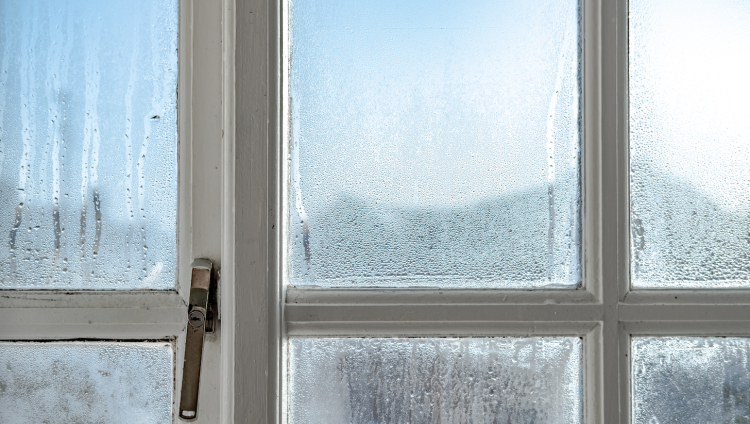Dew Point: The most important forgotten temperature
The southeast is notoriously known for mold. The hot humid summers and cool damp winters allow mold to thrive in this region. Summer 2023 in Nashville saw a lot of rain over a short period of time, which created excessive moisture for a number of days following the rains.
The problem isn’t just the rain, it’s the high humidity levels that come along with it. We are all familiar with the basic measurements of comfort, the most common being dry bulb temperature (simply known as “temperature,” or “air temperature”), and relative humidity. But there is a third parameter, which is very important, that most people don’t understand and rarely consider. That is the dew point temperature.
Dew point temperature is the temperature at which condensation forms. This is important in the humid southeast when we consider mold and mold prevention because where there is moisture, there is mold. Moisture is ultimately the trigger for mold growth.
We are all familiar with the concept of dewpoint whether we know it or not. Imagine taking a cold coke out of the refrigerator and setting it outside on a summer day in Nashville. On this particular day, the air temperature is 90 degrees F and 45% humidity. The can is around 38-40 degrees F. When it’s placed outside, a layer of moisture forms on the surface of the can. Where did that water come from? It’s the magic of thermodynamics at play.
The cold can condense the water vapor right out of the air! As long as that can is below the dewpoint temperature, moisture will form. In this particular case, the dewpoint temperature of the outside air is 65.8 deg F, meaning that moisture will form on any surface below that temperature. Since the can is at roughly 40 degrees, it is cold enough to condense the water vapor in the air into liquid water on the can.
This same phenomenon can happen in our homes. When a house is leaky and hot humid outdoor air has the opportunity to seep into the cool living space, it can condense on surfaces that are at or below the dewpoint temperature. But are there really surfaces that are THAT cold in a house.
Many local residences prefer a rather cool thermostat set point in the summer. 68-70 degrees is not unusual for our clients. Unfortunately, a cooler setpoint puts the home at risk for condensation.
In some extreme cases, which occurred this summer in parts of Middle Tennessee, the dewpoint can rise to 70 degrees F or higher! And it did on August 3rd, 2023 just north of Chattanooga. The outdoor temperature was 82 degrees, humidity peaked at 68.7%, and the dewpoint reached 70.7 degrees F!
For one unlucky homeowner, this elevated dewpoint led to mold growth on the wood finishing of a vacation home that was actively being cooled to 68 F over a period of months in the summer while the house was vacant. When the homeowner returned, they were shocked to see mold had taken root in many areas.
Unfortunately, in this case, the vaulted wood panel ceiling was quite leaky, which allowed hot humid air from outside to easily migrate to the interior. This could have likely been mitigated by setting the thermostat higher, above the dewpoint, at say 76 degrees F. A higher temperature can also save a significant amount of energy cost.
When HVAC systems are designed, they are usually selected based on how much heating and cooling a home will need. That need depends on the set point of the thermostat. The Air Conditioning Contractors of America (ACCA) uses 75 degrees and 50% relative humidity (1). There are a few reasons. First, this set point is in the middle of the comfort zone, set by ASHRAE (2). It is also considered a comfortable temperature that does not require excessive amounts of energy to maintain. For instance, if the set points are adjusted down to 70 degrees and 30% humidity, an additional ton of cooling capacity is required (1). So, not only does a higher set point save energy and reduce the burden of the AC unit, but it also significantly reduces the risk of mold formation.
(1): Energy.GOV: HVAC: Calculating Loads (2013). https://www.energy.gov/sites/prod/files/2013/12/f5/webinar_hvac_calculatingloads_20110428.pdf
(2): SimScale: What is ASHRAE 55 Thermal Comfort (2023). https://www.simscale.com/blog/what-is-ashrae-55-thermal-comfort/

